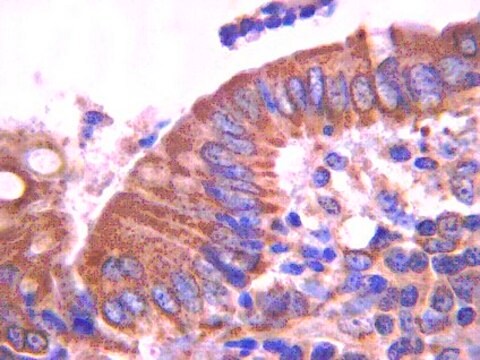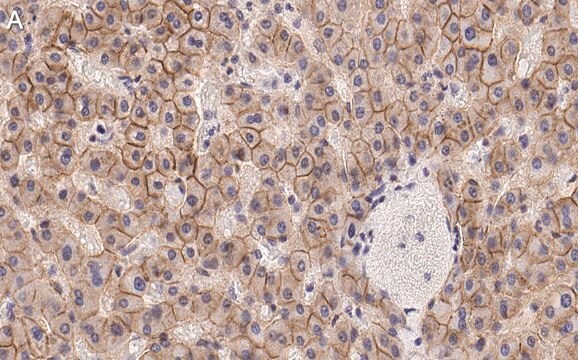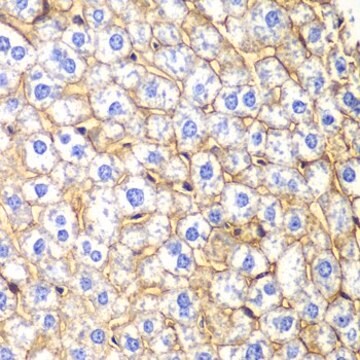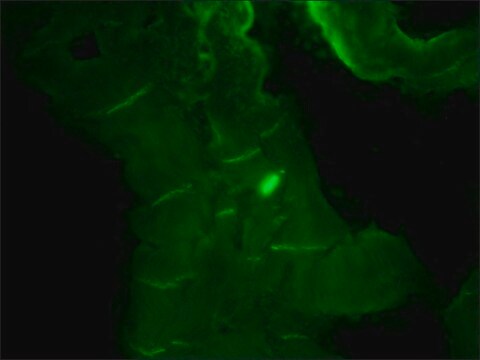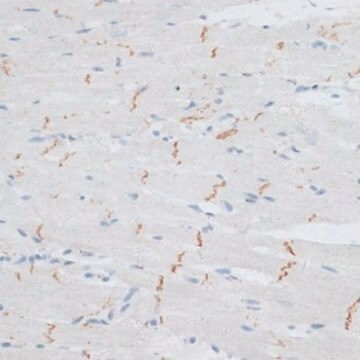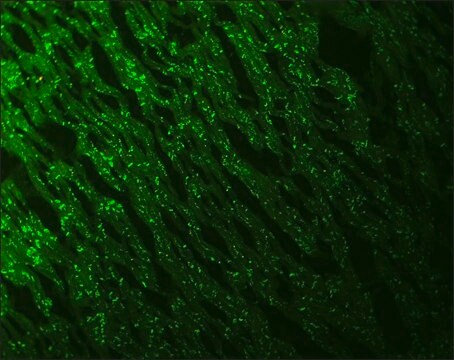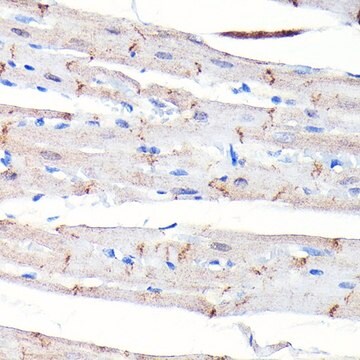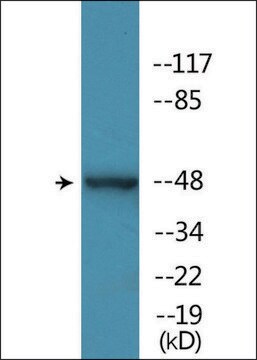MABT530
Anti-N-cadherin Antibody, clone 6A9.2
clone 6A9.2, from mouse
Sign Into View Organizational & Contract Pricing
All Photos(2)
About This Item
UNSPSC Code:
12352203
eCl@ss:
32160702
Recommended Products
biological source
mouse
Quality Level
antibody form
purified antibody
antibody product type
primary antibodies
clone
6A9.2, monoclonal
species reactivity
rat, human
technique(s)
immunohistochemistry: suitable (paraffin)
western blot: suitable
isotype
IgG2aκ
NCBI accession no.
UniProt accession no.
shipped in
ambient
target post-translational modification
unmodified
Gene Information
human ... CDH2(1000)
General description
Cadherin-2 (UniProt P19022; also known as CD325, CDw325, N-cadherin, Neural cadherin) is encoded by the CDH2 (also known as CDHN, NCAD) gene (Gene ID 1000) in human. N-Cadherin is a single-pass type I membrane protein that plays a role in calcium-dependent cell adhesion. N-cadherins preferentially interacts with themselves in a homophilic manner in connecting cells; may thus contribute to the sorting of heterogeneous cell types. Cadherins are synthesized as precursor proteins that are proteolytically cleaved to generate functional, mature proteins. Newly synthesized proN-cadherin (a.a. 1-906) is phosphorylated and proteolytically processed prior to transport to the plasma membrane. Cadherins are composed of an extracellular domain (a.a. 160-724 of human N-cadherin) with five homologous repeats that mediates adhesion, a single pass transmembrane domain (a.a. 725-745 of human N-cadherin), and a conserved cytoplasmic domain (a.a. 746-906 of human N-cadherin) that interacts with catenins to link cadherins to the actin cytoskeleton. N-cadherin is well expressed in endothelial cells and plays an essential role in the maturation and stabilization of normal vessels. However, it also promotes tumor cell survival, migration and invasion, and a high level of its expression is often associated with poor prognosis.
Specificity
Clone 6A9.2 targets an epitope within N-cadherin extracellular cadherin 1 domain.
Immunogen
GST/His-tagged recombinant human N-cadherin extracellular cadherin 1 domain fragment.
Application
Immunohistochemistry Analysis: A 1:1,000 dilution from a representative lot detected N-cadherin in human cervical cancer, adrenal gland, and liver tissue sections.
Research Category
Cell Structure
Cell Structure
This mouse monoclonal Anti-N-cadherin antibody, clone 6A9.2, Cat. No. MABT530 is validated for use in Immunohistochemistry (Paraffin) and Western Blotting for the detection of N-cadherin.
Quality
Evaluated by Western Blotting in C6 cell lysate.
Western Blotting Analysis: 0.5 µg/mL of this antibody detected N-cadherin in 10 µg of C6 rat glioma cell lysate.
Western Blotting Analysis: 0.5 µg/mL of this antibody detected N-cadherin in 10 µg of C6 rat glioma cell lysate.
Target description
~140 kDa observed. Target band size appears larger than the calculated molecular weights of 99.81/97.23/82.03 kDa (prepro-/pro-/mature human N-cadherin) and 99.69/97.24/81.91 kDa (prepro-/pro-/mature rat N-cadherin) due to glycosylation. Uncharacterized bands may be observed in some lysate(s).
Linkage
Replaces: 04-1126
Physical form
Format: Purified
Protein G purified.
Purified mouse IgG2aκ in buffer containing 0.1 M Tris-Glycine (pH 7.4), 150 mM NaCl with 0.05% sodium azide.
Storage and Stability
Stable for 1 year at 2-8°C from date of receipt.
Other Notes
Concentration: Please refer to lot specific datasheet.
Disclaimer
Unless otherwise stated in our catalog or other company documentation accompanying the product(s), our products are intended for research use only and are not to be used for any other purpose, which includes but is not limited to, unauthorized commercial uses, in vitro diagnostic uses, ex vivo or in vivo therapeutic uses or any type of consumption or application to humans or animals.
Not finding the right product?
Try our Product Selector Tool.
recommended
Product No.
Description
Pricing
Storage Class
12 - Non Combustible Liquids
wgk_germany
WGK 1
Certificates of Analysis (COA)
Search for Certificates of Analysis (COA) by entering the products Lot/Batch Number. Lot and Batch Numbers can be found on a product’s label following the words ‘Lot’ or ‘Batch’.
Already Own This Product?
Find documentation for the products that you have recently purchased in the Document Library.
Our team of scientists has experience in all areas of research including Life Science, Material Science, Chemical Synthesis, Chromatography, Analytical and many others.
Contact Technical Service